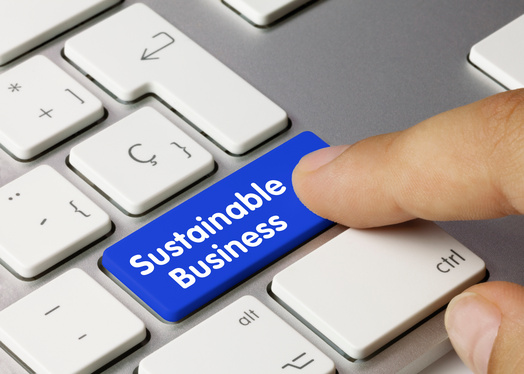We reached out to leading experts in the ESG investing industry to find out their responses, and this is what we found…
QUESTIONIt seems more expansive company reporting on sustainability factors creates a better business model – WHY?
ANSWERMarci Bair, CFP, Bair Financial Planning
ANSWERThe more ESG data a company has the better it can analyze that data and information that is pertinent to the success of their company. ESG data is critical for a company to know its sustainability score for the long-term health of their company. Shareholders are educating themselves on companies ESG scores and supporting those companies that are creating a better business model that supports diversity, equity and inclusion. Employees are also becoming more decerning on whether the company they work for shares their values and those companies with higher ESG scores will attract employees focused on the future and shared success of the company.
QUESTIONIt seems more expansive company reporting on sustainability factors creates a better business model – WHY?
ANSWERRebecca Self, Director of Sustainable Finance at South Pole
ANSWERComprehensive reporting on sustainability factors provides important insight on the drivers of value creation and destruction in an organization. This supports long-term strategic decision making, looking beyond simply the financial results alone. Creating a better long-term business model requires a good understanding of a company’s customers, employees and other key stakeholders. This type of sustainability information, as well as environmental metrics, give a rounded view of business impact and the future drivers of financial results.
QUESTIONIt seems more expansive company reporting on sustainability factors creates a better business model – WHY?
ANSWEREvan Zall, President, Longview Strategies
When you want to build a better engine, you poke at the gears, you examine how the pieces fit together, and you also step back to look at the machine in broader context. How can it safely perform at peak performance – for the operators, the mechanics, and everyone else involved? Same thing for expansive reporting on sustainability factors. The process that companies follow to develop accurate and authentic sustainability reporting uncovers operational risks, areas of strength, and pathways to improvement that were previously left unexplored. The resulting communications can drive greater trust in the brand, increase customer loyalty, enhance employee recruiting and retention, and boost shareholder confidence.
QUESTIONIt seems more expansive company reporting on sustainability factors creates a better business model – WHY?
ANSWERRabo Garba, Senior Business Development Manager – Silicon Ranch Corporation
I think the key to successful sustainability reporting is to focus on the most impactful areas within a company’s control without losing sight of overall improvement. When leaders can take an honest look at the entire organization’s role in society and where they want to go, sustainability can then be aligned and integrated throughout the organization. I believe this kind of focus leads to better execution.
QUESTIONIt seems more expansive company reporting on sustainability factors creates a better business model – WHY?
ANSWERVishal Thiruvedula, Head of Product at RS Metrics
ANSWERExpansive company reporting based on a standardized framework reduces the disclosure gap and the risk of misleading investors by providing precise information needed for investment decisions. Advances in geospatial technology such as satellites and sensors are giving companies additional tools to address the environmental disclosure gaps.
QUESTIONIt seems more expansive company reporting on sustainability factors creates a better business model – WHY?
ANSWERTea Ivanovic, Co-founder and Chief Operating Officer at Immigrant Food
Impact investors are no longer a niche in the financial industry, and companies are catching on to that new reality. Doing “good” doesn’t have to come at the expense of companies’ bottom line and businesses have a much larger responsibility than maximizing returns to shareholders: we are entering an era where stakeholders are the community at large, not merely investors.
QUESTIONIt seems more expansive company reporting on sustainability factors creates a better business model – WHY?
ANSWERAbass Bila, Doctorate Candidate, FMVA, CSMA, Asset Management
ANSWERCompanies’ sustainability factors disclosure exercise scarcely responds to the general call for more transparency in their reporting. Yet Transparency towards sustainability reporting represents a fundamental part of the sustainability process, which can ultimately enable innovation. Hence, expansive company reporting on key factors can help them bridge sustainability and profitability for better value propositions along with disruptive and long-term business models.
QUESTIONIt seems more expansive company reporting on sustainability factors creates a better business model – WHY?
ANSWERPablo David Necoechea Porras, Ph.D., ESG and Sustainability Senior Manager, Investor Relations, Televisa
ANSWERCompanies are increasingly reporting sustainability factors because environmental, social and governance (ESG) management is linked to greater value creation. A strong, consistent but ambitious ESG proposal can help companies access new market niches and expand in existing markets. In addition, ESG management can also significantly reduce companies’ operating costs through the efficient use of resources or the introduction of circular economy strategies in their value chain. Finally, a strong ESG management can help companies recruit, select and retain labor talent and enhance employer branding; which increases company productivity by promoting a sense of purpose and an organizational culture based on organizational development.





